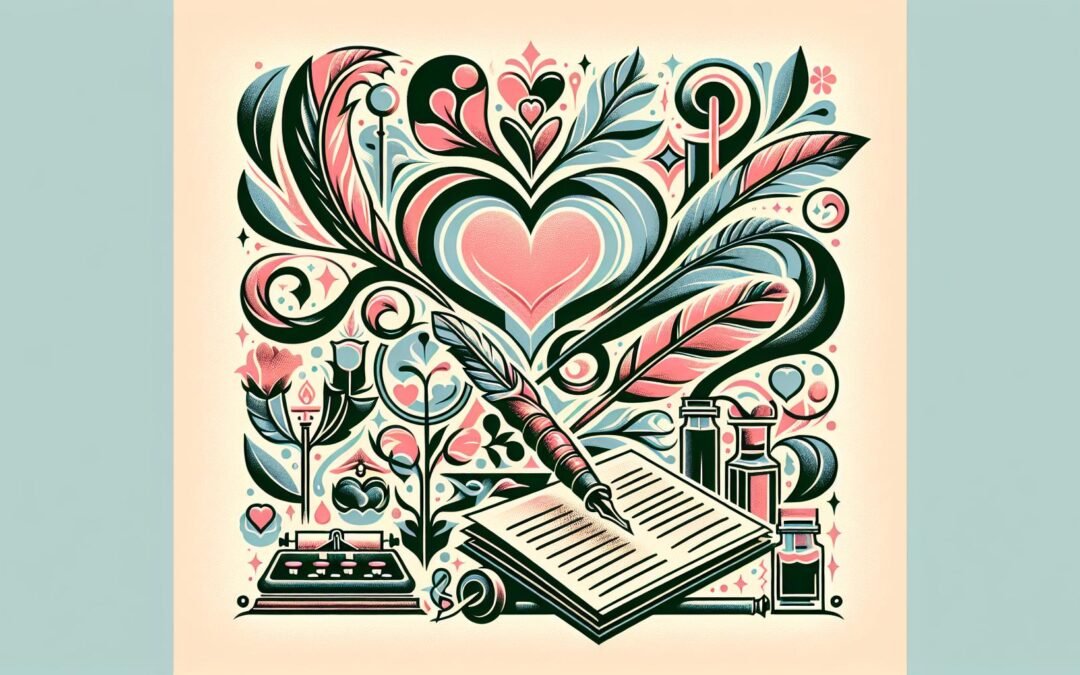Romantic love poems have shaped emotional expression from antiquity to the present, mapping the ache of longing, the shock of union, and the bitter aftertaste of loss. From shimmering fragments written by Sappho to digital verses that circulate through social media, poetry about romantic love captures shifting ideals and social codes. Articles such as Most Romantic Poems Of All Time explore the enduring appeal of these works, showing their resonance across centuries and cultures.
The Historical Evolution Of Romantic Love Poems
The earliest recorded love lyrics reflect a spectrum of cultural traditions, though the prestige of Greek and Roman poetry has led many later writers to imitate their imagery, tone, and form. While most guides foreground European literature, classical Chinese, Persian, and Sanskrit poets also contributed foundational approaches to romantic passion. Discerning the differences among these traditions reveals their debt to local philosophies and religious beliefs, which color even the most universal themes.
Classical Origins: Sappho, Ovid, And The Many Roots Of Love Poetry
Sappho of Lesbos, composing in archaic Greek, shaped lyric address around the immediacy of sensation and the uncertainty of desire. Her lines present flowers and sweet oils as tangible proof of emotion, rooting love in physical sensation and the subtle shifts of the body. Meanwhile, Ovid’s Amores and Ars Amatoria fuse wit, dramatic irony, and erudite cynicism, transforming love into a sparkling contest of intellect and performance. These poets marked out lasting archetypes for the confession of yearning or the playfulness of courtship. Ancient Indian and Hebrew texts—such as the Gita Govinda and the Song of Songs—translate the sweetness of longing into language charged with spiritual significance. Poems from Persian and Chinese traditions substitute metaphysical yearning or subtle allusion in place of candid confession, as seen in the ghazals of Hafez and the moonlit landscapes of Tang poetry. For a fuller view, Romanticism In Wordsworth And Coleridge Poetry explores these early influences on the nineteenth-century British imagination.
Medieval Codes: Troubadours, Al-Andalus, And Courtly Love
Medieval Europe developed elaborate rituals around romantic devotion, exemplified by the troubadours of Occitania, whose songs to their domna—the admired yet unattainable lady—echoed with secrecy, humility, and verbal inventiveness. Poets like Chretien de Troyes and Marie de France reframed love as a noble quest, crossed with risk and reward, while writers of Al-Andalus expressed devotion through philosophical lyricism blended with Sufi mysticism. The diversity of these traditions resists easy summary, but they shared a fascination with obstacles, longing, and the profound disquiet of unfulfilled desire. Further reading on Romantic Poems To Make Her Feel Special demonstrates the lasting impact of these tropes, tracing their influence on later forms.
Renaissance And Metaphysical Revisions: Petrarch, Shakespeare, Donne
The sonnet cycle became a vehicle for refined interplay between obsession and intellect during the Renaissance, particularly with Petrarch’s introspective meditations on Laura and Shakespeare’s broader range of beloveds. Petrarch elevated distance, purity, and emotional suffering, embedding these in exacting rhyme and syntax. Shakespeare reimagined the sonnet with a focus on time, change, and sexual ambiguity. The metaphysical poets, especially John Donne and Andrew Marvell, relied on intricate conceits—extended metaphors such as Donne’s compass in “A Valediction: Forbidding Mourning”—to dramatize both distance and union. Elizabethan and metaphysical writers strove to synthesize body and spirit, deploying wit and paradox with rhetorical skill. A selection of Romantic Poems To Make Her Cry showcases the distinct emotional textures created by these innovations.
Romantic And Victorian Transformations: Wordsworth, Keats, Barrett Browning
British Romantic poets, incited by revolutionary fervor and philosophical shifts, redirected love poetry towards inwardness, natural scenery, and psychological intensity. Goethe’s Werther fueled an age of sensibility, while Wordsworth and Coleridge examined how landscape and memory mediate desire. Keats and Shelley imagined love as redemptive, yet plagued by impermanence, aligning beauty and tragedy in verses of lush sensuality. The period also saw women poets claim authority, as Mary Robinson, Elizabeth Barrett Browning, and Anna Laetitia Barbauld interrogated their roles as both speakers and objects of affection. Their innovations included confessional stances and challenges to established forms. Romantic Poems For A Beautiful Woman highlights how the tradition began to expand toward wider perspectives.
Modernism And The Contemporary Mosaic
Twentieth-century and twenty-first-century poets inherited these legacies but resculpted them using new freedoms, forms, and social realities. Pablo Neruda distilled passion into elemental imagery, writing odes that explode with immediacy. Adrienne Rich, Anne Carson, and D. A. Powell examined desire’s complications, scrutinizing language itself as a barrier or bridge. Poets from Palestinian, Nigerian, and Japanese backgrounds, along with queer voices, render colonialism, migration, and identity as forces that shape or reconfigure romantic bonds. Visual poems, text messages, and collaborative works expand the boundaries of genre. For examples that reflect this diversity, visit the selection of Romantic Poems that updates classic forms for present contexts.
Forms, Motifs, And The Language Of Romantic Love Poems
Love poetry is shaped not only by its history but also by the structures and motifs through which poets channel feeling. Recognizing the mechanics and recurring symbols clarifies how these lyrics grip the imagination, moving from formal discipline to experimental play.
Sonnets: Structure And Shifting Expectations
The Petrarchan sonnet divides into octave and sestet, with the volta supplying a moment of change or reversal in logic. Shakespearean sonnets use three quatrains plus a couplet, tightening the poem’s argument and drawing the mind to closure. This structure grants poets a disciplined frame for exploring longing, loyalty, or heartbreak. Yet, not all sonnets depend on a sudden shift or resolution. To see elegant examples of the form’s flexibility, browse Romantic Poems For Her.
Lyric, Ballad, Free Verse, And Visual Modes
Traditional and modern romantic love poems appear in myriad shapes. Lyric poems condense desire into brief, musical, and private statements, whether in Sappho’s patterned lines or in Keats’s lush odes. Ballads, distinguished by their use of refrain, dialogue, and narrative repetition, recount tales of devotion, betrayal, or tragic loss, bridging oral performance and written memory. Free verse and experimental forms—embraced by poets like E. E. Cummings and Ocean Vuong—make use of fragmentation, white space, and unconventional typography to display longing’s volatility. Some poets turn words into shapes, as in concrete poetry, or transform existing texts with erasure. Explore the breadth of these styles through Romantic Short Love Poems.
Major Symbols And Objects
Romantic poetry draws heavily on flowers, celestial bodies, and shifting seasons as markers of erotic promise and peril. Roses, lilies, and moonlight evoke fleeting beauty or secrecy. Stars and seasons—especially spring and autumn—register the cycles of hope, fulfillment, and regret. Common items like gloves, mirrors, or jewelry often grow charged with personal memory, transforming into tokens that record a couple’s history. For poems that showcase the use of such objects, visit Famous Romantic Poems.
Themes: Idealization, Realism, Loss, And Transcendence
Idealization appears as the high polish applied to unattainable beloveds, as in Petrarch’s Laura or Dante’s Beatrice. Realist strands surface in poets such as Frank O’Hara, whose urban lovers speak in fluently modern tones, and in Richard Siken, whose narrators parade imperfection and insecurity. Unrequited love generates transformation and obsession, while union presents rare moments of bliss or recognition. Loss—occasioned by absence, death, or betrayal—incites new formal strategies, from the geometric logic of Donne’s compass to Auden’s public lament in “Funeral Blues.” For those seeking verses steeped in bittersweet emotion, Romantic Poems For Her To Make Her Cry curates selections tailored to these moods.
The Range Of Tone, Diction, And Musicality
Tone varies from rapturous to sardonic, plaintive to playful. Some poets encrypt longing in suggestive ellipses or riddling brevity, as in Emily Dickinson’s compact lines. Others deploy elaborate diction, classical references, or extended simile to heighten atmosphere and emotion. Classical Chinese and Persian poets favor subtlety and allusion; English metaphysicals rely on sudden turns of thought and paradoxes. Diction and phrasing reflect the gender, culture, and historical moment of composition. For short, powerful examples, browse the collection of Romantic Short Poem For Her.
Political, Satirical, And Prose Dimensions
Love poems sometimes serve political or satirical functions, as seen when John Wilmot, Earl of Rochester, mocked courtly conventions, or when Persian poets disguised dissent within the codes of romantic address. Prose romance and correspondence, such as love letters, amplify intimacy and narrative scope, blending personal voice with literary artistry. Collections such as Best Romantic Poems sometimes gather both verse and prose to highlight the spectrum of romantic writing.
Global Repertoires And Key Developments
Although Eurocentric canons have long dominated, romantic love poems thrive in many languages and regions. The ghazals of Persian and Urdu poetry merge mystical and sensual longing, using repeated refrains and rangy imagery to dramatize desire’s advances and retreats. Japanese waka and tanka trade on brevity and seasonal reference. African oral traditions, especially praise songs and lamentations, explore romantic bonds within broader communal narratives. Chinese classical poems, as by Li Bai or Du Fu, turn moonlight and rivers into vehicles for distant longing. Recent decades have witnessed rich explorations of gender diversity and non-heteronormative love in verse. Cross-cultural anthologies and digital sharing platforms broaden the accessible repertoire. Leading resources such as the Poetry Foundation or Poets.org provide access to these varied traditions alongside critical essays and selected texts.

